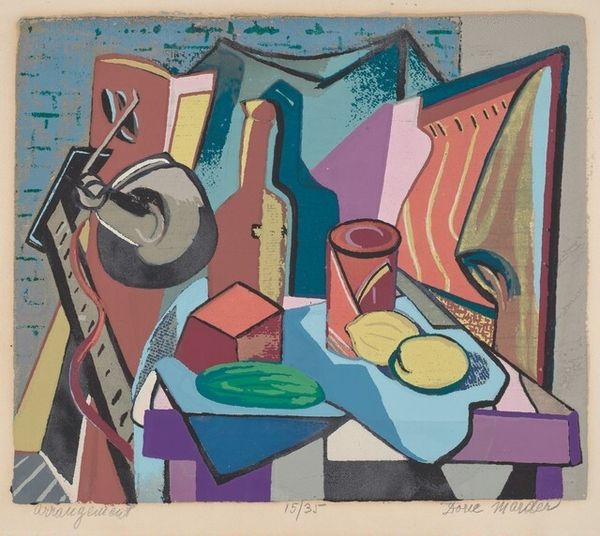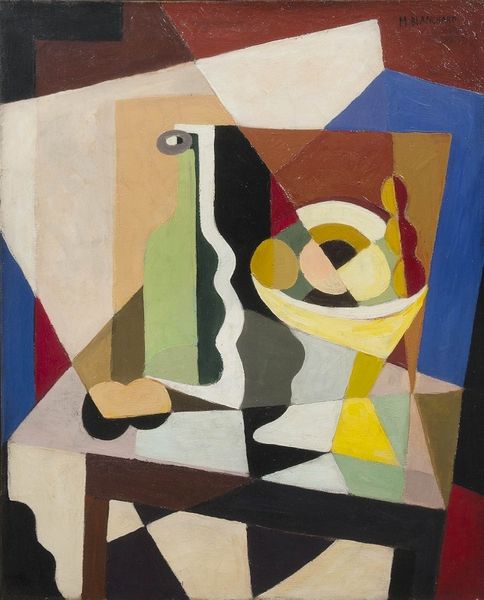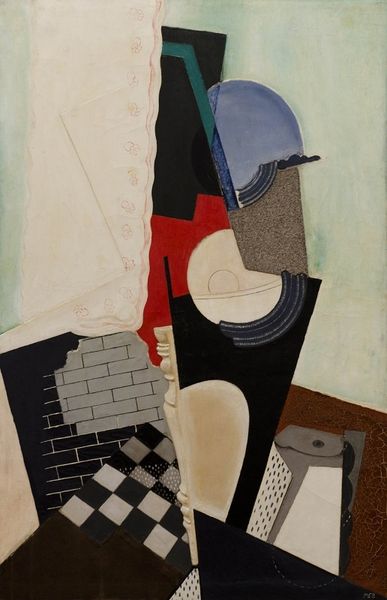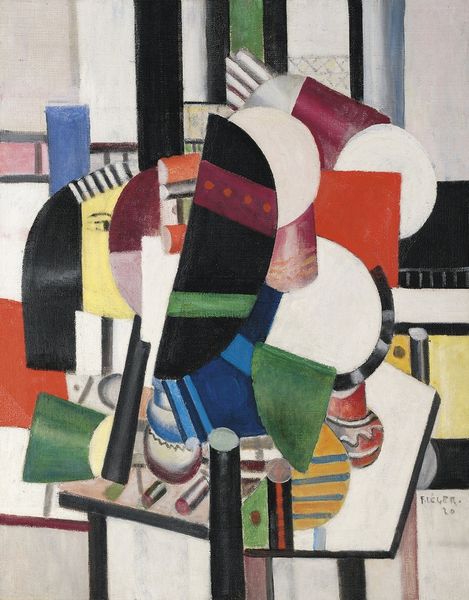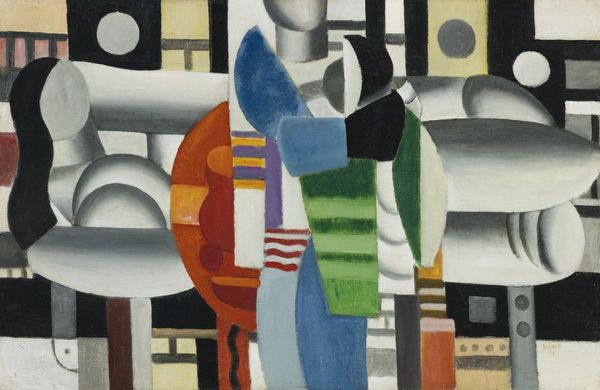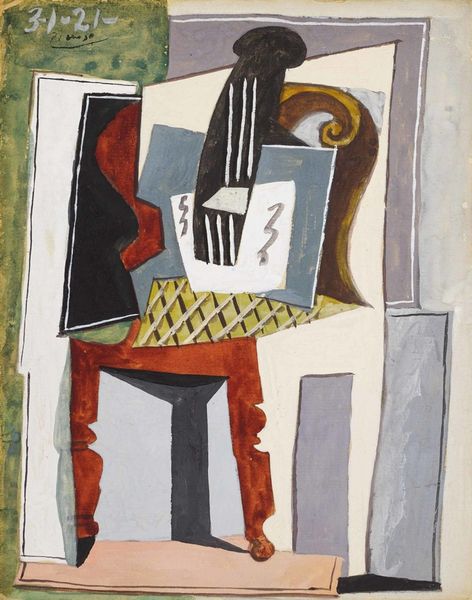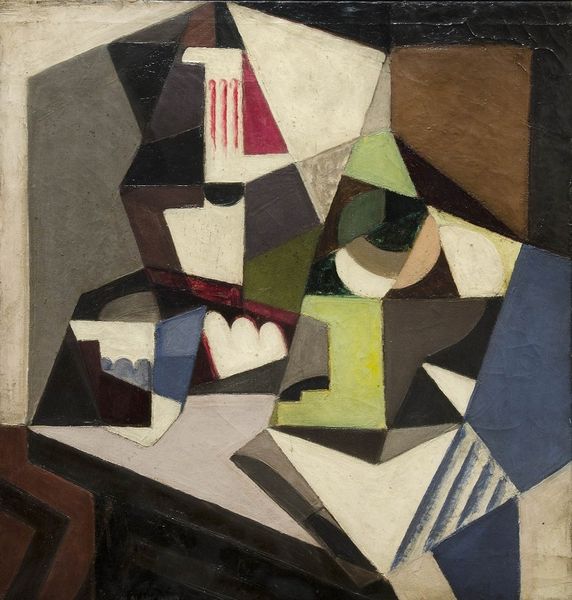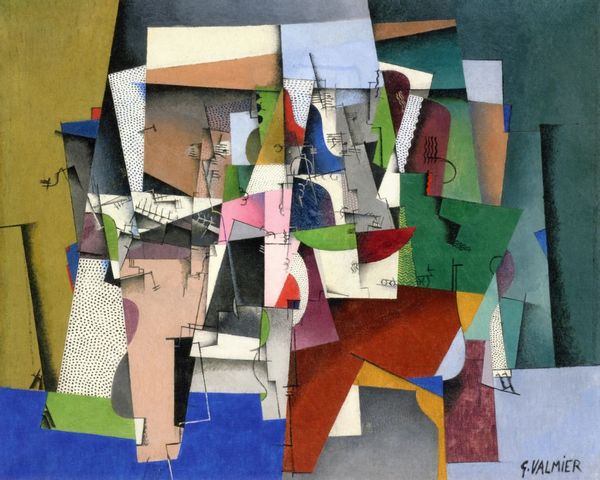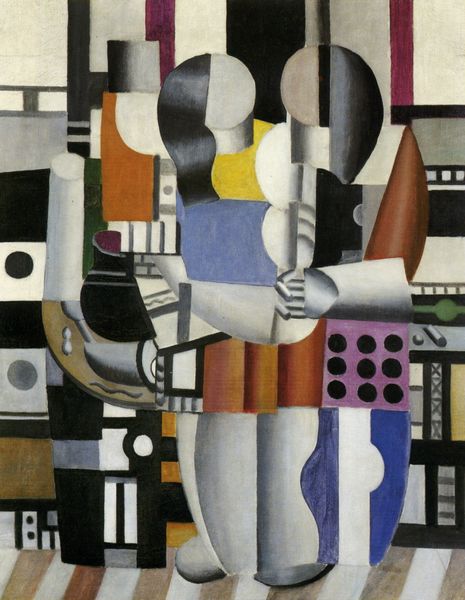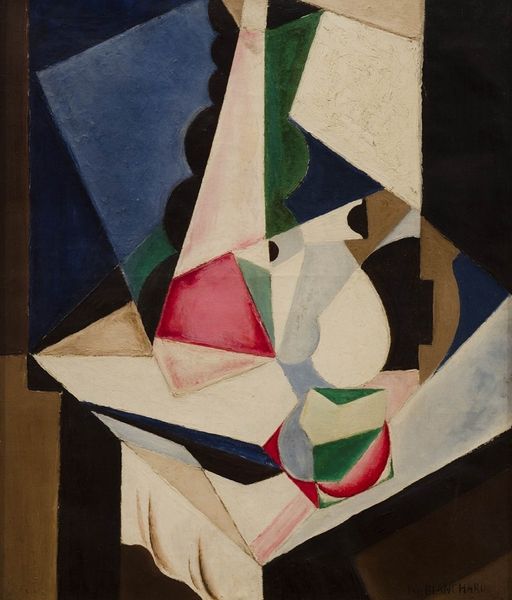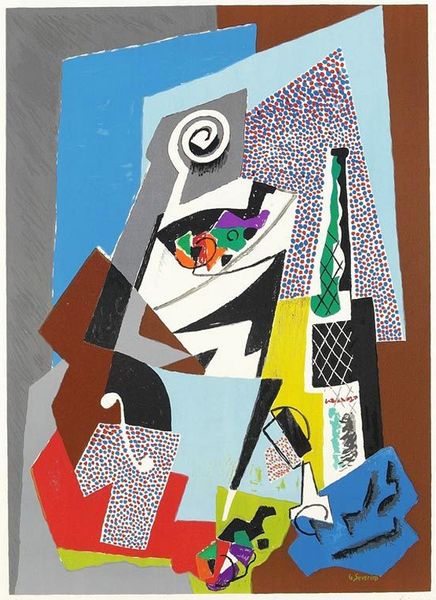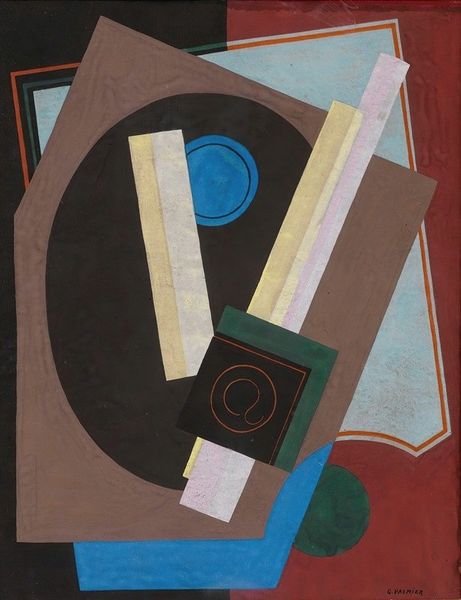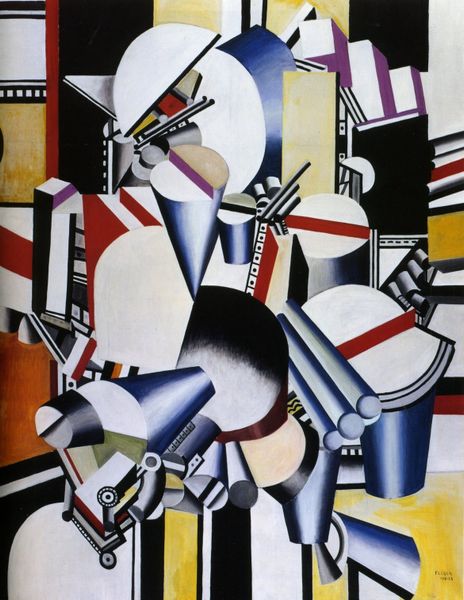
painting, oil-paint
#
cubism
#
painting
#
oil-paint
#
modernism
Copyright: Public domain
Curator: We’re looking at "Bodegón Con Caja De Cerillas," or "Still Life with a Box of Matches," painted by María Blanchard in 1918. It’s an oil on canvas. What strikes you about it initially? Editor: Well, it's all edges and angles, isn't it? Feels almost chaotic, but somehow harmonious. There's a definite domestic feel...intimate even, with the everyday objects broken down and reassembled in this fascinating way. Curator: Absolutely. Blanchard was working firmly within the Cubist idiom here, deconstructing familiar objects, a bottle, a matchbox, a glass. It's not just about what's depicted, but *how* it's depicted. Look at the paint application. It's quite thick in places. Notice the influence of Synthetic Cubism. Editor: I love how the textures play off each other, that impasto against the smoother, flatter planes. And the colors! That deep blue against the muted browns and greens – it’s quietly captivating. It evokes, I don't know, a sense of quiet concentration, a paused moment in the studio, maybe even a contemplative one. Curator: Consider also the societal backdrop. This was painted towards the end of World War One. Material scarcity and economic uncertainty affected even the art world. The ordinary objects she portrayed elevate the value and beauty in things usually disregarded, which offers insight into daily life at the time. Editor: That makes sense. And that humble matchbox suddenly feels loaded with meaning. It becomes a symbol of domesticity, resilience. You have got to consider how that symbolism really connects the personal to the societal impact. Curator: Exactly. Blanchard’s Cubism feels unique due to its embrace of more vibrant, emotive color schemes than was usually employed. I think her emotion peeks out and personalizes the intellectual style that was fashionable, making it warmer. Editor: I’d agree! Seeing it this way makes the piece come alive in an unusual way. This brief look at the textures and the materials feels intimate, like overhearing a conversation about someone you’ve admired from afar. Thanks. Curator: A fresh way to ignite one’s appreciation, wouldn’t you agree? It showcases not only Cubism, but also what daily life would consist of for working women in particular at this historical moment.
Comments
No comments
Be the first to comment and join the conversation on the ultimate creative platform.
